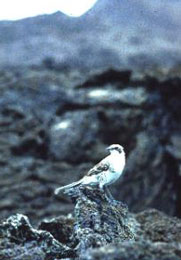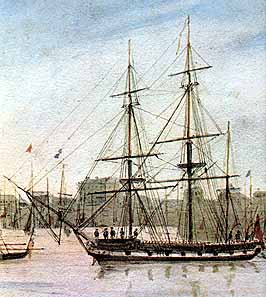 The archipelago and its mockingbirds
Galápagos Mockingbird Galápagos mockingbird bibliography
http://www.homepage.villanova.edu/robert.curry/nesomimus/ |
Darwin's Mockingbirds
The endemic mockingbirds of the Galápagos
On 17 September 1835, Charles Darwin disembarked from H. M. S. Beagle in the Galápagos near Sappho Cove on Chatham Island (now known as Isla San Cristóbal). Among the first animals Darwin encountered was a bold, terrestrial mockingbird (left), similar to those he had seen previously in South America.
| The bird is known today as Mimus melanotis, the San Cristóbal Mockingbird. Over the subsequent 6 weeks that Darwin spent in the Galápagos, he observed mockingbirds on three other islands. The 3 species in his collections had a profound influence on Darwin's thinking about geographic variation ... and its causes: |  |
Arguably, these birds had a greater influence than any other organism on the initial development of Darwin's concept of Natural Selection.
Subsequent exploration and research revealed the presence of 4 endemic, allopatric mockingbird species within the Galápagos archipelago. I invite you to explore this web site to learn more about Darwin's mockingbirds.
Latest news and research:
Research publication
Arbogast, B. S., S. V. Drovetski, R. L. Curry, P. T. Boag, G. Seutin, P. R. Grant, B. R. Grant, and D. J. Anderson. 2006. Origin and diversification of Galapagos mockingbirds. Evolution 60:370-382
Taxonomy and nomenclature
Based in large part on the analyses of Arbogast et al. (2006), the American Ornithologists' Union South American Check-List committee merged Nesomimus, the endemic clade comprising the four traditionally recognized Galápagos mockingbirds, into Mimus (September 2007).
Conservation
Reintroduction of the Floreana Mockingbird: joint project of the Charles Darwin Foundation, the Galapagos National Park, and the Galapagos Conservation Trust hopes to return mockingbirds (Mimus trifasciatus) to Floreana beginning in 2010
Popular press
To understand a mockingbird: specimens that sparked Darwin's theory of evolution (The Guardian, 14 Nov 2008)